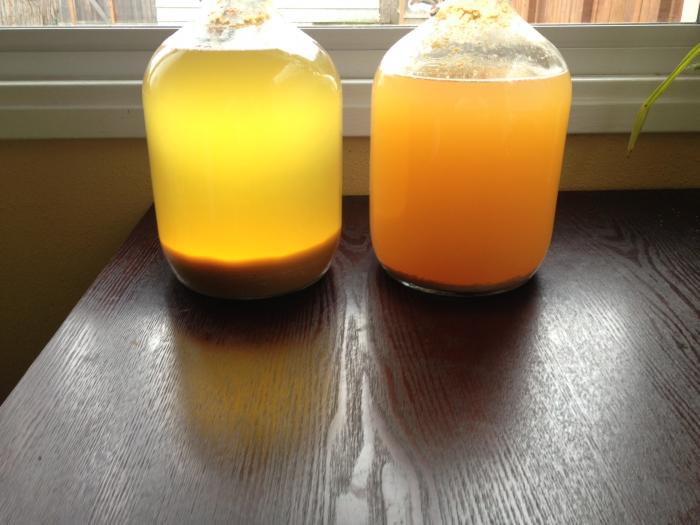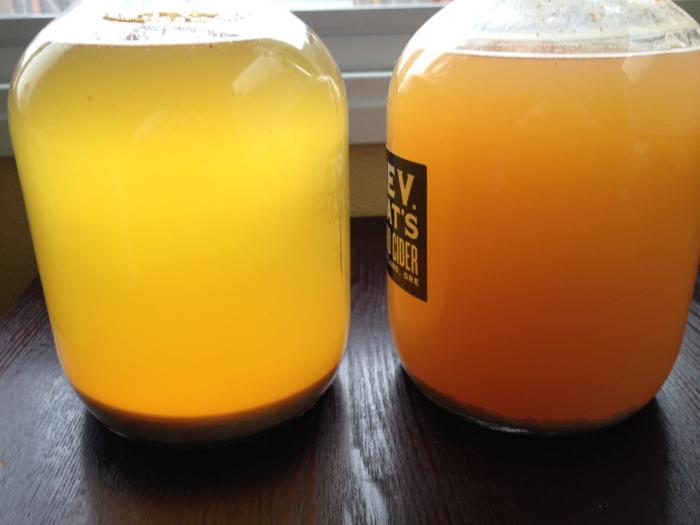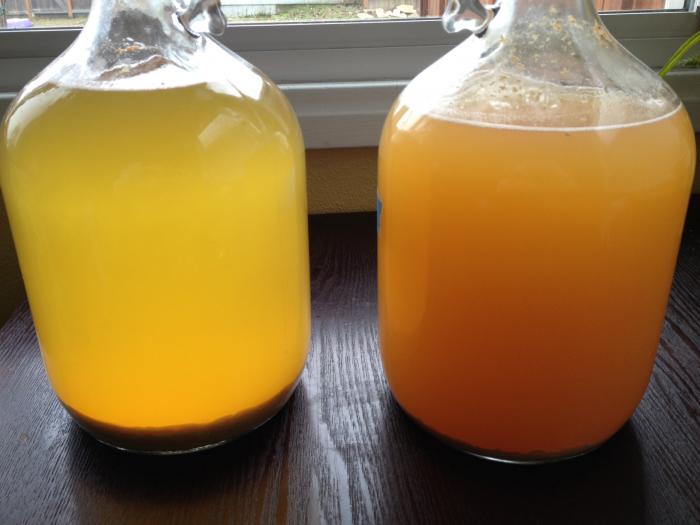SoontoCidery
Member
I have attached three images, each of which are controlled examples of three different yeast strains used in a 1 gallon batch of two different apples juices still in primary fermentation.
The gallon jug that you will see on the left (in each of the photos) is the non-pasteurized version and the second is a pasteurized version of the juice. Both have been sitting in the same dark room for 3 weeks and are very close to fully dry if not fully dry already (will be racking them this weekend). Controlled for: temp, volume, time, exposure to light.
Image d-6 (1st image) = Lalvin D47
Image r-1 (2nd image) = Wyeast Cider- 4766
Image R-9 (3rd image) = Lalvin Bourgovin RC212
I understand this is not news to most but do love to see this every time I make a new batch. I am currently working through 11 different yeast varietals controlled in the same manner in small gallon batches, just thought this would be interesting to see. Will update with more pics and thoughts as things move along.



The gallon jug that you will see on the left (in each of the photos) is the non-pasteurized version and the second is a pasteurized version of the juice. Both have been sitting in the same dark room for 3 weeks and are very close to fully dry if not fully dry already (will be racking them this weekend). Controlled for: temp, volume, time, exposure to light.
Image d-6 (1st image) = Lalvin D47
Image r-1 (2nd image) = Wyeast Cider- 4766
Image R-9 (3rd image) = Lalvin Bourgovin RC212
I understand this is not news to most but do love to see this every time I make a new batch. I am currently working through 11 different yeast varietals controlled in the same manner in small gallon batches, just thought this would be interesting to see. Will update with more pics and thoughts as things move along.



















![Craft A Brew - Safale S-04 Dry Yeast - Fermentis - English Ale Dry Yeast - For English and American Ales and Hard Apple Ciders - Ingredients for Home Brewing - Beer Making Supplies - [1 Pack]](https://m.media-amazon.com/images/I/41fVGNh6JfL._SL500_.jpg)







































